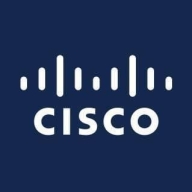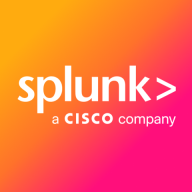

Splunk AppDynamics and Cisco Intersight both compete in the application performance monitoring and data center management category. Splunk AppDynamics seems to have an advantage in application performance monitoring with its detailed insights and extensive analytics, while Cisco Intersight shines in integration capabilities across hybrid cloud environments.
Features: Splunk AppDynamics offers comprehensive JVM monitoring, end-to-end transaction visibility, and real-time performance alerts. Its dynamic baselining and extensive analytics aid proactive problem-solving. Cisco Intersight provides exceptional integration with data center systems, visibility across hybrid cloud environments, and supports automated management of on-premises and cloud resources.
Room for Improvement: Splunk AppDynamics could improve its historical data granularity and simplify its interface for better usability. It faces challenges in alert setup and integration with performance testing tools. Cisco Intersight users desire enhancements in hybrid cloud management and integration with third-party tools. Automation capabilities and data center environment support also need improvement.
Ease of Deployment and Customer Service: Splunk AppDynamics is versatile across deployment types including public and hybrid cloud, offering flexibility in IT environments. It receives high praise for support and customer service, although complex issue resolutions can be slower. Cisco Intersight prioritizes on-premises and public cloud options, with strong customer service feedback for its prompt and knowledgeable support. However, users find some functionalities complex to use.
Pricing and ROI: Splunk AppDynamics is recognized for its high cost and complex licensing model, yet its high ROI justifies the expense for many users. Cisco Intersight presents a more competitive pricing strategy with a straightforward licensing model. Initial setup costs may be high, but the potential for long-term savings, particularly in data center optimization, is acknowledged by users.
It simplifies the onboarding of new hardware, reducing time spent on manual installations and configurations.
Overall, as a production gatekeeper, we achieve at least 50% efficiency immediately, with potential savings ranging from 60 to 70% as well, reinforcing why it is a popular tool in the banking industry.
According to errors, exceptions, and code-level details related to their application performance on a daily basis, the application development team tries to help with Splunk AppDynamics to reduce errors and exceptions, which helps the end users get application availability and feel more confident.
To understand the magnitude of it, when the company asked to replace Splunk AppDynamics with another tool, I indicated that for the proposed tool, we would need five people to do the analysis that Splunk AppDynamics enables me to do.
For complex issues, it's challenging to get the right engineer quickly unless you have a specific contract like CX.
Cisco provides better support than anyone else.
Cisco technical support is helpful.
AppDynamics is much more helpful.
We got a contact, an account manager, to work directly with for technical support.
They help us resolve any issues raised by our team relating to operations, application instrumentation, or any other issues.
I rate its scalability a ten out of ten due to its capability to manage multiple domains and automate service requests.
Cisco Intersight is scalable enough for our needs, allowing management in a multi-environment setup and working remotely while deploying servers.
We have reached maximum capacity in our tier, and extending capacity has not been cost-effective from Splunk's perspective.
I would rate the scalability of Splunk AppDynamics as a nine out of ten.
I assess how Splunk AppDynamics scales with the growing needs of my organization as good, since we are growing and adding more servers.
Some steps are not included in the official documentation, which can create challenges.
It is always accessible online, secure, and allows access from any location, following strict authentication standards.
It is necessary to conduct appropriate testing before deploying them in production to prevent potential outages.
There are no issues or bugs with the 20.4 version; it is very stable with no functionality or operational issues.
Splunk AppDynamics is superior to any alternative, including Dynatrace.
There is a significant issue regarding migration from UCS Manager into Intersight without formatting the Fabric Interconnects (FI), which is problematic in a production environment.
It would be great to have a chat session mode AI so that when I am on standby and encountering issues, I could engage with it, much like ChatGPT.
When registering our devices and servers using tokens, auto-detection could make it easier by automatically identifying resources and adding them to the platform.
Splunk AppDynamics does not support the complete MELT framework, which includes metrics, events, logging, and tracing for the entire stack.
If AppDynamics could develop a means to monitor without an agent, it could significantly improve application performance and reduce potential problems.
A good integration with Splunk would be very interesting, as Splunk is a good product for logs, and that part is currently missing in Splunk AppDynamics.
The pricing is fair and reasonable, particularly for enterprises.
Cisco Intersight's license cost is very high compared to AWS and Azure solutions, which have lower initiation costs.
The pricing mechanism sounds fair.
We completed a three-year deal for Splunk and for AppDynamics, which costs millions of dollars.
Customers have to pay a premium price, however, they receive considerable value from the product.
All these solutions at the moment are cheap, but it is like paying for insurance; you pay insurance to avoid major damage.
This solution has provided time savings and required fewer people to operate this tool, rather than direct cost savings.
It provides visibility into other products and storage, and is beneficial for environments where Cisco and other vendors coexist, allowing full visibility of the entire infrastructure.
It also provides predictive analysis, predicting data leaks and making it easy to scale up servers remotely without requiring physical interference.
We have multiple tools, but end users prefer to use Splunk AppDynamics because their portal navigation is very simple and clear.
The real user monitoring and digital experience monitoring effectively track actual user experience with the applications, including page loading, interaction time for both desktop and mobile applications.
This is the best feature because, although you can't monitor a whole application at once, Splunk AppDynamics gives you the option that if there is any failure—simple failure regarding anything set up as per our use cases—you will get an alert.
| Product | Market Share (%) |
|---|---|
| Splunk AppDynamics | 2.8% |
| Cisco Intersight | 1.7% |
| Other | 95.5% |


| Company Size | Count |
|---|---|
| Small Business | 4 |
| Midsize Enterprise | 4 |
| Large Enterprise | 7 |
| Company Size | Count |
|---|---|
| Small Business | 55 |
| Midsize Enterprise | 36 |
| Large Enterprise | 189 |
Cisco Intersight is Cisco’s systems management platform that delivers intuitive computing through cloud-powered intelligence. This platform offers a more intelligent level of management that enables IT organizations to analyze, simplify, and automate their environments in ways that were not possible with prior generations of tools. This capability empowers organizations to achieve significant savings in Total Cost of Ownership (TCO) and to deliver applications faster, so they can support new business initiates. The advantages of the model-based management of the Cisco UCS platform plus Cisco Intersight are extended to Cisco UCS servers and Cisco HyperFlex and Cisco HyperFlex Edge systems. Cisco HyperFlex Edge is optimized for remote sites, branch offices, and edge environments.
Splunk AppDynamics enhances application performance monitoring with advanced diagnostics and real-time insights, offering seamless end-to-end transaction tracking and infrastructure visibility.
AppDynamics provides critical tools for businesses to analyze application behavior and performance. Through innovative features like transaction snapshot analysis and adaptable dashboards, users can quickly identify and address issues, ensuring high levels of system uptime and efficiency. It is designed to support complex environments including Kubernetes and AWS, enhancing user experience by detecting performance issues early. Despite needing improvements in network monitoring and integration, it remains a robust option for tracking application health.
What are the key features of AppDynamics?In industries like financial services and e-commerce, AppDynamics facilitates performance tracking across distributed systems, optimizing infrastructure to meet consumer demands. It excels in environments needing precise transaction monitoring and is pivotal in delivering high value and satisfaction.
We monitor all IT Infrastructure Monitoring reviews to prevent fraudulent reviews and keep review quality high. We do not post reviews by company employees or direct competitors. We validate each review for authenticity via cross-reference with LinkedIn, and personal follow-up with the reviewer when necessary.